Every night at 1:30am the drivers of Borgesius Bakery start loading their trucks. For the longest time this tight schedule was causing the end dispatchers a great deal of stress. However thanks to Pcdata’s Performance Dashboard the dispatch area is now quieter than ever before and additionally costs have reduced greatly. Borgesius’s Willy Boneschansker; ” we are now able to schedule a lot more accurately than before”.

Everyday Borgesius delivers fresh bread
Everyday Borgesius delivers fresh bread products to 128 Jumbo supermarkets in the northern part of The Netherlands. They deliver bread from their own bakery in Veenoord as well as a large number of other products baked in other Bake Five- Group bakeries. These products are being picked at shop level and delivered to Veenoord. ‘’Cross-docking enables us to combine these products with our own fresh products and deliver them to the stores. Added together we offer a selection of 200 products”, states Willy Boneschansker, location manager at the Dutch bakery.
The nineteen Borgesius trucks leave early in the morning to ensure a 7:30am bread delivery at the store.’’ This gives shop personnel another half hour before the store opens to put the bread on the shelves. We can only meet this tight delivery schedule if our drivers start loading their trucks at 1:30am. By then dispatching should be ready”, states Boneschansker.


Green or red screen
Borgesius was one of the first bakeries in The Netherlands to talk to Pcdata about managing their distribution process, back in the early ‘90’s. Distrib – Pcdata’s Warehouse Management System – shows the dispatcher how the bread trays should be dispatched among the four dispatch areas. Then using a put-to-light system, Distrib indicates how many units must be received in each store.
Recently Borgesius started using Pcdata’s Performance Dashboard. Two large monitors located above the dispatch areas inform the team how they are progressing. A green screen means they are on time. A red screen means they are running behind schedule. “Everyone can clearly see when they need to be finished and whether they are on target to meet that deadline. Especially around holidays or during special events when volumes are much higher, it is always uncertain if that deadline will be met”, tells Boneschansker.
Performance Dashboard has created a sense of calm on the shop floor, notices the Veenoord location manager. “Dispatching product can, at times, be very stressful. Especially when you see a large stack of trays waiting to be dispatched. The Performance Dashboard lets the dispatchers see how busy it actually is going to be and lets them plan their workload and coffee breaks accordingly.
Tighter scheduling
Performance Dashboard not only provides information for the dispatchers, the supervisors are also updated throughout. If the screen shows one dispatch area that is constantly red, the supervisor can either add a dispatcher or help out until green has replaced the red. Boneschansker: “That flexibility to add dispatchers is essential.
Performance Dashboard not only reduces stress, it also takes out costs. Not necessarily because of the monitors that are located above the dispatch areas, but more so as a result of the improved planning capability. “We can now schedule a lot tighter than we ever did before. We used to have all four dispatchers start each day at 8am, regardless of volume. During the holidays we would schedule in an additional worker, however it was never clear if that dispatcher was actually working efficiently. With Performance Dashboard we can accurately calculate the number of man hours needed to dispatch the expected volume. As a result we have the four end dispatchers start half an hour earlier on busy days such as Fridays, depending on the estimated workload. Or they can start half an hour later if the expected volume is less.


No stress
The two monitors are positioned in a way the end dispatchers can always look at Performance Dashboard, regardless which side they are walking. Dashboard has four rotating screens. The first screen shows productivity per dispatch area and number of dispatched baskets (crates). The fourth screen tells the order picker the number of baskets (crates) he needs to dispatch and the number he dispatched so far. That final screen contains the most important information and is shown the longest. “However you can control what screen you want to show and for how long”.
An essential aspect of Performance Dashboard is TAKT times, or the standard times: the average time required for an end dispatcher to dispatch a stack of crates (standard times are specified per task). The shorter the standard time the quicker the dispatchers will have to work to prevent a backlog in the schedule. ‘’The standard time we use is based on historical data and industry parameters. This standard time enables dispatchers to work without stress”, ensures Boneschansker, who acknowledges that employees had to get used to Performance Dashboard. “They had to learn to trust the system.”
Knowledge of dozens of bakeries
When asked whether the investment in Performance Dashboard pays back, Boneschansker nods. “The most important factor is cost reduction as a result of more efficient planning, but also reduced stress levels and a better control of the distribution process are items which help you to get an ROI” according to Boneschansker, who says he is very fortunate to have a partner like Pcdata. “Pcdata is actively thinking with us, for example what kind of information we should display on the screens. We are just as pleased with the service level. If at night a problem occurs, it gets fixed immediately. Sometimes it seems like Pcdata employees sleep with a laptop under their pillow.’’




